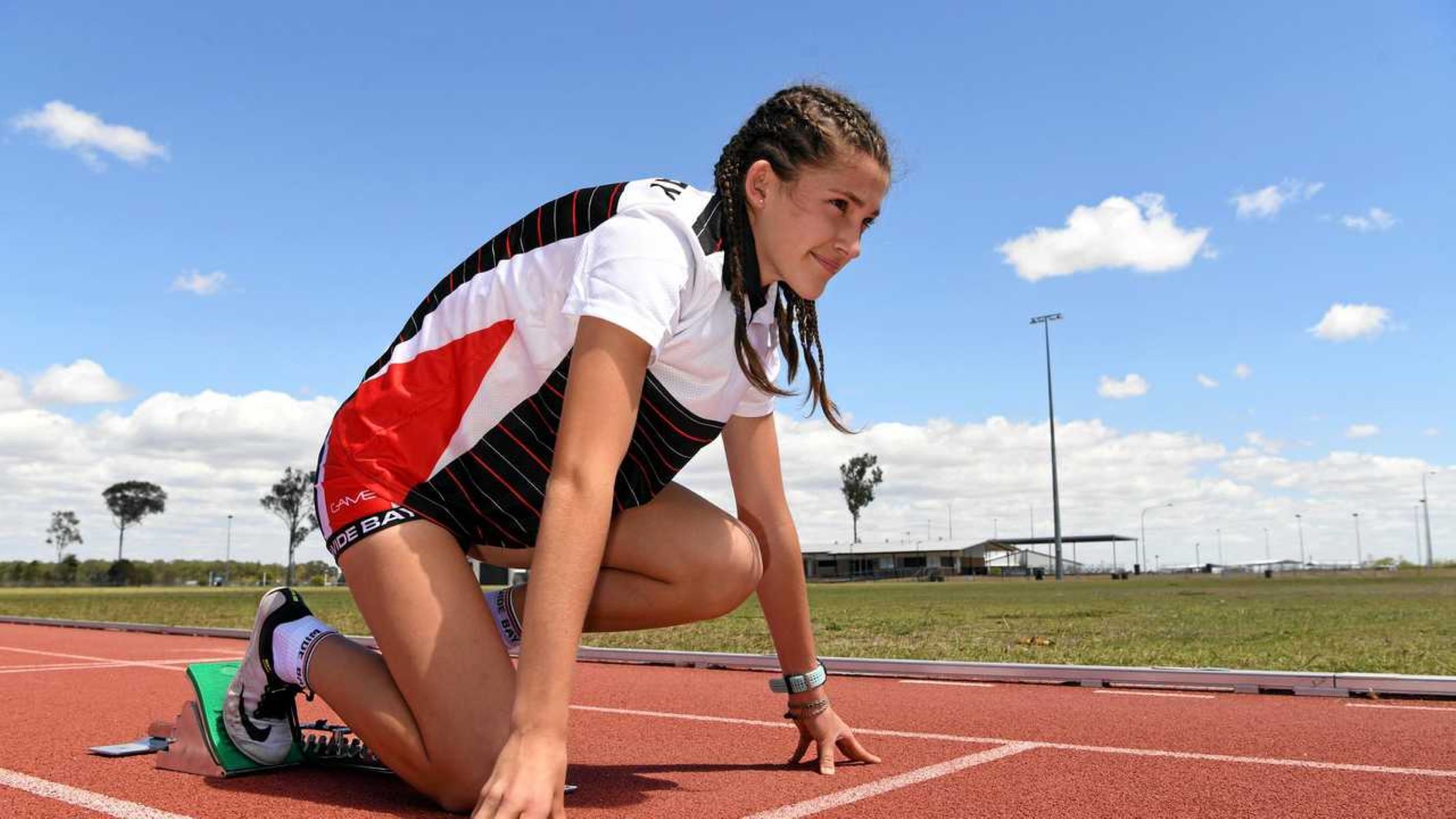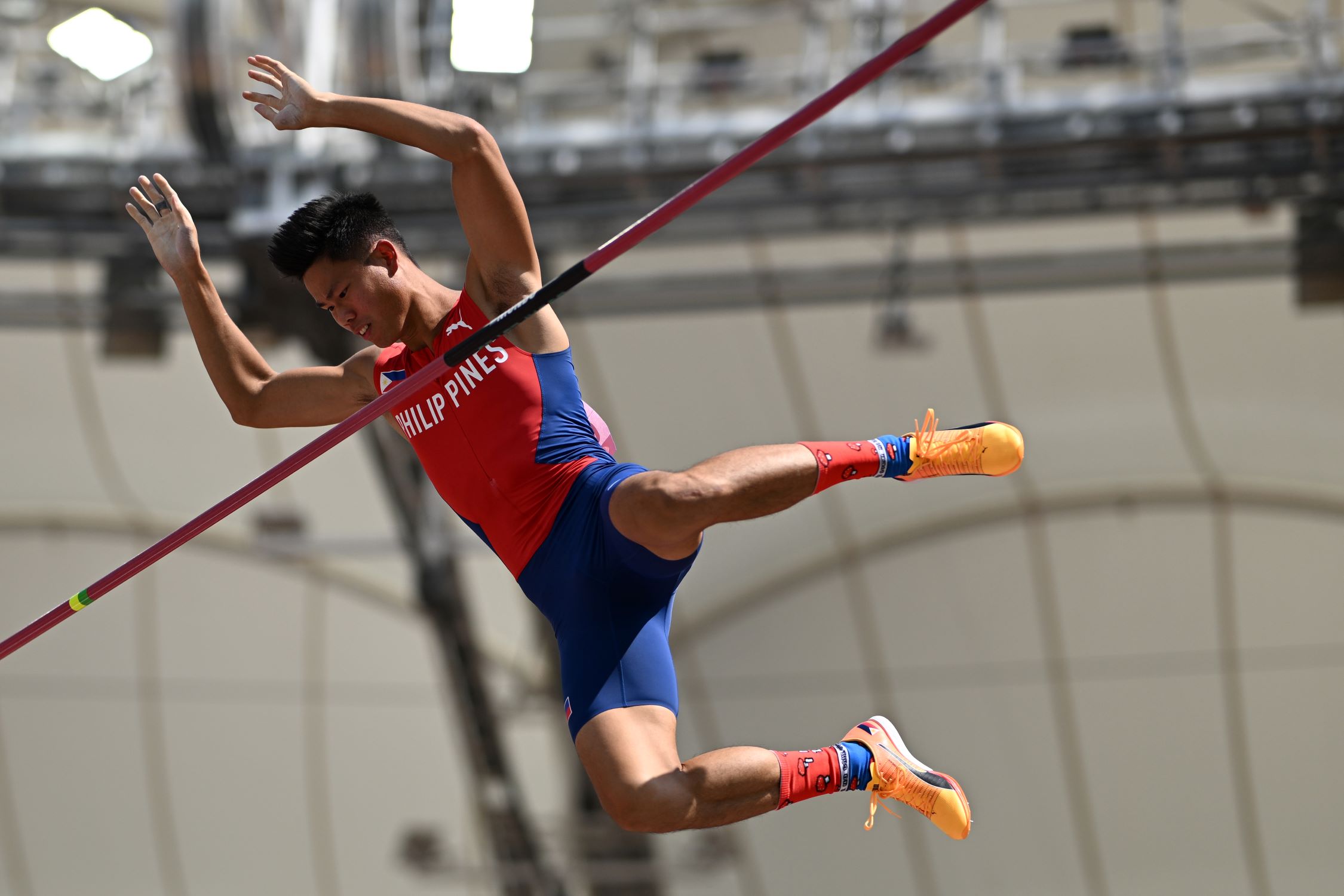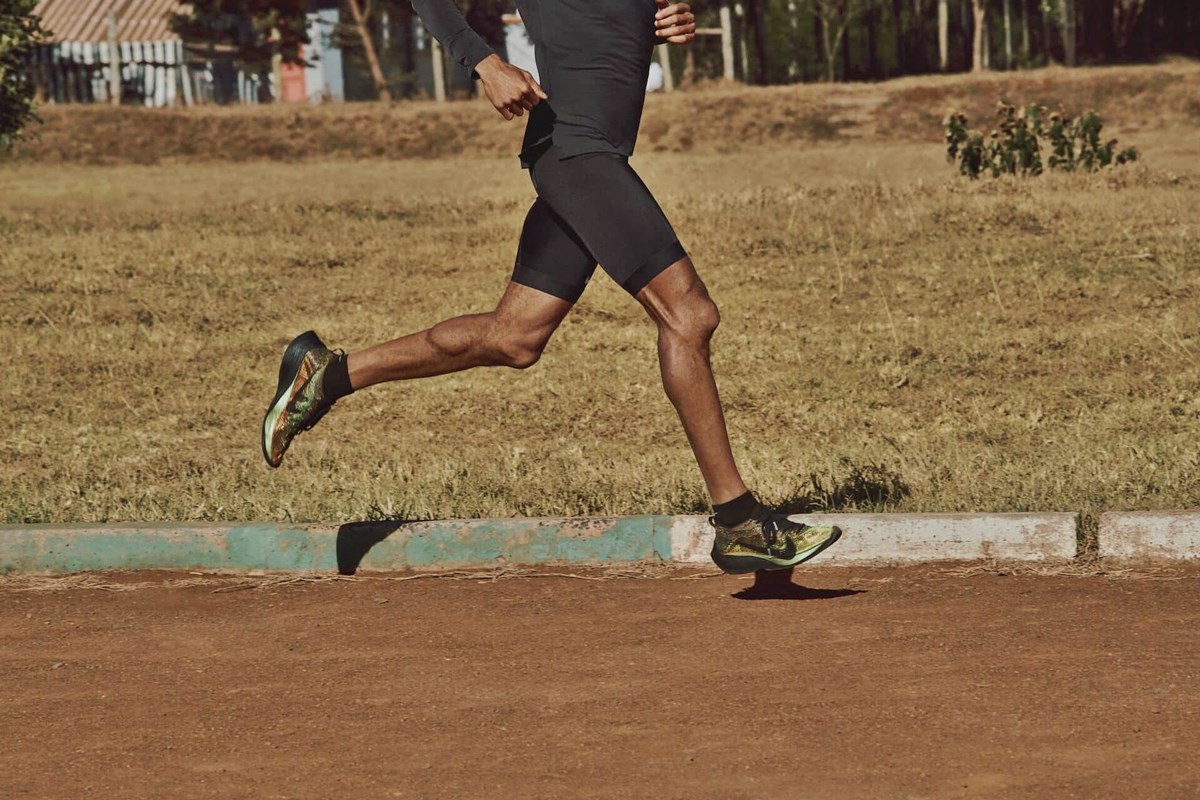Home>Misc>Featured>What Does A Starter Do In Track And Field


Featured
What Does A Starter Do In Track And Field
Published: September 5, 2023
Discover the importance of a starter in track and field with our featured article. Understand their role in initiating fair races and ensuring athlete safety.
Introduction
Track and field is a sport that combines speed, strength, and agility. From sprinting to long-distance running, jumping to throwing, there are numerous events that showcase an athlete’s skill and determination. But have you ever wondered how these races and events begin with such precision? The answer lies in the role of the starter.
The starter is a crucial figure in the world of track and field. Their primary responsibility is to ensure fair starts, manage the flow of the race, and uphold the rules and regulations of the sport. They play a vital role in setting the tone for the entire event, and their expertise can often make the difference between a successful race and a chaotic one.
In this article, we will delve into the world of track and field starters, exploring their purpose, roles, and responsibilities. We will also examine the procedures involved in starting a race and the consequences of false starts. By understanding the importance of a skilled starter, we can gain a deeper appreciation for the precision and fairness that exists within the world of track and field.
Purpose of a Starter
The role of a starter in track and field extends beyond simply initiating the race. Starters serve several important purposes that help maintain the integrity and fairness of the competition.
First and foremost, starters ensure that all competitors have an equal and fair start. By controlling the start of the race, starters minimize the advantages that some athletes may have over others. They make sure that each participant begins the race from the same starting point and has an equal opportunity to showcase their skills and abilities.
Another important purpose of a starter is to enforce the rules and regulations of the sport. They ensure that athletes adhere to the specified starting procedures and maintain a fair and competitive environment. Starters play a crucial role in preventing false starts, disqualifying athletes who violate the rules, and resolving any disputes or controversies that may arise during the race.
Furthermore, starters are responsible for the safety of the athletes. They ensure that the racing conditions are favorable and free from any potential hazards. They also communicate important information to the participants, such as the distance of the race, any potential obstacles, and any changes in the race schedule.
Lastly, starters contribute to the overall organization and smooth operation of the event. They work closely with race officials, timekeepers, and other track and field staff to ensure that the competition runs efficiently. They coordinate the timing of the race, communicate with the athletes, and provide instructions to the participants and other race officials.
In summary, the purpose of a starter in track and field is to ensure fair starts, enforce the rules and regulations of the sport, ensure athlete safety, and contribute to the smooth operation of the event. Their presence is crucial in maintaining the integrity and competitiveness of the sport, and they play a vital role in setting the stage for exciting and memorable races.
Role and Responsibilities of a Starter
Being a starter in track and field comes with a range of important roles and responsibilities. These duties are essential for ensuring the fairness and smooth execution of races. Let’s explore the key responsibilities of a starter:
1. Setting the Start Line: Starters carefully position the athletes at the start line, ensuring that all competitors are aligned correctly. They make sure that each participant is positioned properly in their assigned lane or starting block to maintain a level playing field.
2. Issuing Commands: Starters communicate with the athletes using verbal commands, hand signals, or a combination of both. They give instructions, such as “On your marks”, signaling the athletes to get ready, and “Set”, indicating the final moment before the start of the race.
3. Initiating the Start: The role of a starter includes initiating the race by firing a starter’s pistol, sounding an electronic device, or using any other approved method. They ensure that the athletes start simultaneously, providing equal opportunities for all participants.
4. Monitoring for False Starts: Starters closely observe the athletes during the start of the race to identify any false starts. If a competitor jumps the gun before the start signal, the starter takes appropriate action, such as issuing a warning or disqualifying the athlete, depending on the competition rules.
5. Maintaining Order: Starters have the responsibility of maintaining order and discipline before, during, and after the race. They ensure that the athletes remain calm and focused, address any issues or disputes that arise, and ensure that the race proceeds without any disturbances or interruptions.
6. Coordinating with Officials: Starters collaborate with race officials, timekeepers, and other track and field staff to coordinate the race’s timing and execution. They work closely with the timing team to ensure accurate recording of race times and communicate any necessary information or updates to the officials and participants.
7. Handling Race Restarts: In the case of a false start or any other situation that requires a race to be restarted, the starter is responsible for managing the process. They communicate the need for a restart, instruct the athletes accordingly, and ensure that the race recommences in a fair and controlled manner.
Overall, the role of a starter in track and field encompasses setting the start line, issuing commands, initiating the start, monitoring for false starts, maintaining order, coordinating with officials, and handling race restarts. Their attentiveness, precision, and ability to make quick decisions are essential in delivering fair and well-executed races.
Preparing Athletes for Race Starts
One of the important responsibilities of a track and field starter is preparing the athletes for race starts. This process involves ensuring that the participants are physically and mentally ready to perform at their best. Let’s delve into the various aspects of preparing athletes for race starts:
1. Check-In and Warm-Up: Before the race, athletes must check in with the starter to confirm their presence and receive any necessary information. Starters may also guide athletes through a warm-up routine to ensure their muscles are adequately prepared for the physical demands of the race.
2. Positioning and Stance: Starters help athletes find their designated position and ensure that they are correctly aligned with the start line. They assist athletes in positioning their feet, hands, or starting blocks for an optimal start. This attention to detail helps prevent false starts and provides athletes with a fair and consistent starting position.
3. Managing Nervous Tension: Race starts can be nerve-wracking for athletes, especially in competitive events. Starters play a crucial role in calming nerves and creating a focused and positive environment. They may provide encouraging words, maintain a professional and supportive demeanor, and help athletes channel their nervous energy into focused determination.
4. Clear Communication: Starters ensure that athletes understand the commands and signals used to initiate the race. They clarify any doubts or questions the athletes may have to avoid confusion during the start. Clear communication helps athletes feel confident and ready to execute their race plan.
5. Time Management: Starters help athletes manage their time effectively leading up to the start of the race. By providing timely information about the race schedule and any changes, starters allow athletes to plan and prepare accordingly. This includes notifying athletes of any delays, ensuring they have sufficient time for warm-ups, and creating a smooth transition between events.
6. Mental Focus and Visualization: Starters encourage athletes to cultivate a strong mental focus before the race begins. They may suggest techniques such as visualization or positive self-talk to help athletes mentally prepare for their performance. By emphasizing mental readiness, starters contribute to athletes’ overall race-day preparation.
7. Fairness and Equality: Starters ensure that all athletes are treated fairly and equally in terms of starting position and instructions. They maintain consistency in their approach, creating an environment where every athlete has an equal opportunity to succeed. Starters play a pivotal role in ensuring that the sport remains inclusive and that athletes have confidence in the fairness of the race.
In summary, preparing athletes for race starts is a multidimensional task that involves check-ins, warm-ups, positioning, managing nervous tension, clear communication, time management, mental focus, and ensuring fairness. Starters play a vital role in setting the stage for athletes to perform at their best and contribute to the overall success and credibility of track and field events.
Starting Procedures in Track and Field
The starting procedures in track and field are essential for ensuring fair and consistent starts across different events. These procedures are designed to give all athletes an equal opportunity to showcase their skills and abilities. Let’s explore the key elements of the starting procedures:
1. On Your Marks: The starting process begins with the command “On your marks”. When athletes hear this command, they approach their assigned starting positions and get ready to start the race. This command signals the athletes to take their positions at the starting line or in their designated starting blocks.
2. Set: Once the athletes are in position, the starter gives the command “Set”. At this point, the athletes must come to a complete stop and adopt a still stance while maintaining proper contact with the ground. This command prepares athletes for the imminent start of the race and allows them to gather themselves before the explosive acceleration.
3. Starting Signal: After the athletes are set, the starting signal is given to initiate the race. Traditionally, starters have used a starter’s pistol, firing it into the air to signal the commencement of the race. In modern times, electronic devices such as starting blocks with built-in sensors or digital sound systems are also employed to ensure accurate and consistent timing.
4. False Starts: If an athlete reacts to the starting signal before it is given or makes any abrupt movement deemed to have gained an unfair advantage, it is considered a false start. In most competitions, the first occurrence of a false start results in a warning to the entire field. However, subsequent false starts can lead to disqualification. The rules regarding false starts may vary slightly between different organizations and competitions.
5. Recalls and Restarts: In some cases, races may need to be recalled or restarted due to technical issues or unforeseen circumstances. Recalls occur if there is a faulty start, such as a malfunctioning starting gun or if the starting signal is not heard by all athletes. Starters are responsible for making the decision to recall the race and ensuring a fair and controlled restart when necessary.
6. Handing Over to Officials: Once the race has begun, starters hand over the responsibility of monitoring the race to the officials stationed along the track. These officials ensure that the race is conducted according to the rules and regulations of the particular event, such as marking disqualifications or recording finishing times.
It is worth noting that the specific starting procedures may vary depending on the event and level of competition. For example, in sprint races, athletes use starting blocks, while longer distance events might have a standing or rolling start. Nevertheless, the core principles of fair starts, clear commands, and consistent timing remain constant across all track and field events.
False Starts and Disqualifications
In track and field, false starts can have significant consequences for athletes. They disrupt the fairness and integrity of the race, and in some cases, result in disqualification. Understanding the rules surrounding false starts and disqualifications is essential for both athletes and starters. Let’s explore this topic in more detail:
1. Definition of a False Start: A false start occurs when an athlete reacts to the starting signal before it is given or makes an abrupt movement that provides an unfair advantage. The specific rules regarding false starts may vary between different organizations and competitions, but the primary objective is to maintain fair competition and prevent any undue advantage.
2. Warning System: In most track and field events, the first occurrence of a false start results in a warning issued to the entire field. This warning serves as a reminder to all athletes to adhere to the starting procedures and avoid any premature movements. The warning system acts as a cautionary measure, giving athletes one opportunity to correct their actions and proceed with the race.
3. Individual Disqualification: If an athlete commits a second false start after receiving a warning, they typically face disqualification from the race. This disqualification is a consequence of the repeated violation of the starting rules and their impact on the integrity of the competition. Disqualification removes the athlete from contention and often leads to disappointment and frustration.
4. Recalls and False Start Attribution: In some instances, a false start may be attributed to external factors beyond an athlete’s control. This could include a malfunctioning starting gun, a technical issue with the starting blocks, or an athlete being affected by another competitor’s movement. In such cases, the race may be recalled, and affected athletes are given another opportunity to start without any penalty.
5. Impact on Athletes and Strategies: False starts can disrupt an athlete’s mental focus and race strategy. Athletes must strive to find the delicate balance between being quick off the line and avoiding committing a false start. Too much caution can hinder their performance, while being overly aggressive may result in disqualification. Therefore, it is crucial for athletes to familiarize themselves with the starting procedures and practice their reaction time in training.
6. Role of the Starter: Starters play a vital role in identifying false starts and enforcing the rules. They must closely observe the athletes during the start and make a quick and accurate judgment on whether a false start has occurred. Starters must maintain consistency in their decision-making to ensure fair treatment of all competitors.
7. Continuous Improvement: To minimize false starts and disqualifications, technological advancements have been introduced. Electronic starting systems, including pressure-sensitive starting blocks and speakers emitting a sound signal synchronized with the starter’s gun, provide more precise and consistent timing. These advancements help minimize human error and enhance the accuracy of false start detections.
Understanding the implications of false starts and disqualifications is essential for athletes, coaches, and starters in track and field. Adhering to the starting procedures and maintaining focus and discipline during the start are crucial for ensuring fair competition and upholding the integrity of the sport.
Importance of a Skilled Starter
A skilled starter is an invaluable asset in the world of track and field. Their expertise and precision play a crucial role in the success and fairness of races. Let’s explore the importance of a skilled starter in more detail:
1. Fairness and Equality: A skilled starter ensures that all athletes have an equal chance to compete. By enforcing the starting procedures and identifying false starts, they maintain a level playing field for all participants. This fairness and equality are essential in upholding the integrity of the sport and fostering a sense of trust among athletes.
2. Race Flow and Efficiency: Starters are essential in maintaining the flow and efficiency of races. Their ability to organize athletes at the start line, issue commands smoothly, and initiate the race at the right time ensures that the competition runs smoothly. A skilled starter helps prevent delays, ensures timely starts, and contributes to the overall efficiency of the event.
3. Safety and Risk Management: Starters prioritize the safety of athletes. They ensure that the starting area is clear of any potential hazards and communicate important race information to participants. Their expertise helps minimize the risk of accidents or injuries during the start, creating a safe environment for athletes to perform at their best.
4. Communication and Knowledge: Skilled starters are effective communicators. They clearly convey instructions and information to athletes, officials, and other staff members involved in the race. They possess a deep understanding of the rules and regulations of the sport, allowing them to answer queries, address concerns, and provide guidance to all involved parties.
5. Decision-Making and Conflict Resolution: Starters must make quick and accurate decisions, particularly in cases of false starts or recalls. Their ability to assess situations, resolve conflicts, and maintain objectivity is crucial in ensuring fair outcomes. Skilled starters can handle challenging scenarios with composure and create resolutions that consider the interests of all involved parties.
6. Professionalism and Role Model: Starters establish a professional atmosphere at events, serving as role models for athletes and spectators. Their demeanor, conduct, and attention to detail set the tone for the entire competition. Skilled starters embody the spirit of sportsmanship, inspire respect, and contribute positively to the overall experience of all involved in track and field events.
7. Enhanced Experience for Athletes and Spectators: A skilled starter enhances the experience for both athletes and spectators. By ensuring fair starts, managing the race flow smoothly, and maintaining a safe environment, starters create an atmosphere that allows athletes to perform to their full potential. Spectators can also enjoy a well-organized and exciting competition, knowing that the races are being initiated in a fair and professional manner.
In summary, a skilled starter is a vital component of track and field events. Their role in ensuring fairness, maintaining race flow, prioritizing safety, effective communication, decision-making, professionalism, and enhancing the overall event experience cannot be overstated. Their expertise and contributions are integral to the success and integrity of the sport.
Conclusion
The role of a starter in track and field is crucial for setting the stage and ensuring fair and competitive races. Starters have a range of responsibilities, including preparing athletes, enforcing starting procedures, and managing false starts and disqualifications. Their expertise and skills are vital in maintaining the integrity of the sport.
A skilled starter contributes to the fairness and equality of races by enforcing the rules and maintaining a level playing field for all athletes. Their ability to manage the race flow efficiently, communicate effectively, and make timely decisions ensures that events run smoothly. Additionally, starters prioritize athlete safety, creating an environment where athletes can perform at their best without unnecessary risks.
Furthermore, skilled starters serve as role models and foster professionalism in the sport. Their conduct and attention to detail establish a positive atmosphere for athletes and spectators alike. They enhance the overall experience of track and field events, allowing athletes to showcase their abilities while providing an exciting and well-organized competition for spectators.
In conclusion, the contributions of a skilled starter cannot be understated in the world of track and field. Their role is not just about starting races but also about upholding fairness, ensuring safety, and maintaining the integrity of the sport. Starters are a vital part of creating memorable and enjoyable experiences for athletes, officials, and spectators in the dynamic world of track and field.







